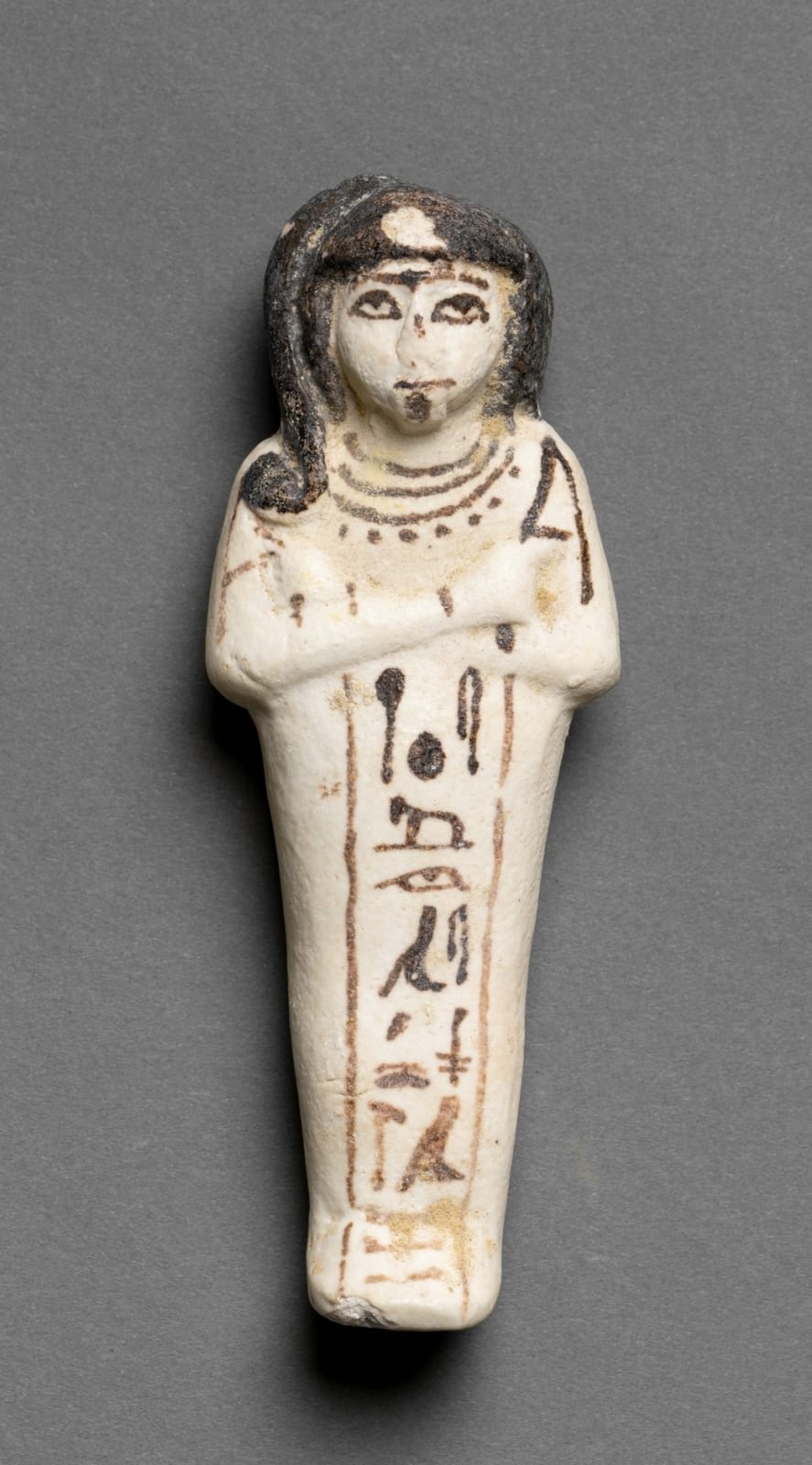Egyptian Faience Ushabti of Khaemwaset
Faience
5.7 x 15.6 cm
2 1/4 x 6 1/8 in
2 1/4 x 6 1/8 in
SK.026
Further images
This black and white ushabti were the funerary figurine of Khaemwaset (c. 1281 BCE-1225 BCE), the son of Pharaoh Ramses II (r. 1279 BCE-1213 BCE), during the 19th Dynasty. Perhaps...
This black and white ushabti were the funerary figurine of Khaemwaset (c. 1281 BCE-1225 BCE), the son of Pharaoh Ramses II (r. 1279 BCE-1213 BCE), during the 19th Dynasty. Perhaps no object better encapsulates the essence of Ancient Egypt than the ushabti. With its shape resembling a divine mummy, the ushabti evokes the mystical aspect of the Egyptians' belief in the afterlife. The word "ushabti" literally means "the answerer." The purpose of these statues is described in Chapter VI of the Book of the Dead: "O this Ushabti! If (the deceased) is called upon to do hard labor in the afterlife, say thou: I am here." The Ushabti was intended to answer the call to work in the place of the deceased, and this passage was often inscribed on the figures. Originally, only one Ushabti was placed in a tomb, but later during the New Kingdom Period, multiple statues were placed in tombs as servants or slaves for the deceased. These ushabtis with side hair, which was a symbol of a young prince or priest, were made during the New Kingdom. On their lower bodies, they are inscribed with the hieroglyphs that read "The overseer, Osiris, the Sem Priest (of Ptah), the son of the king, Khaemwaset."





